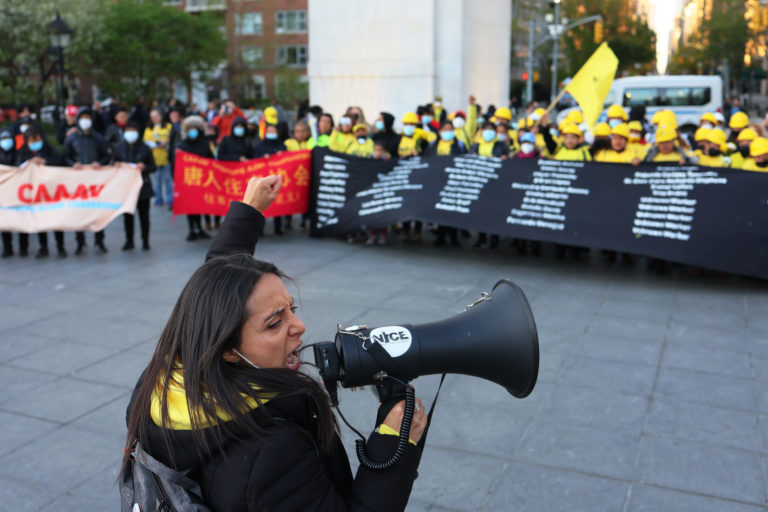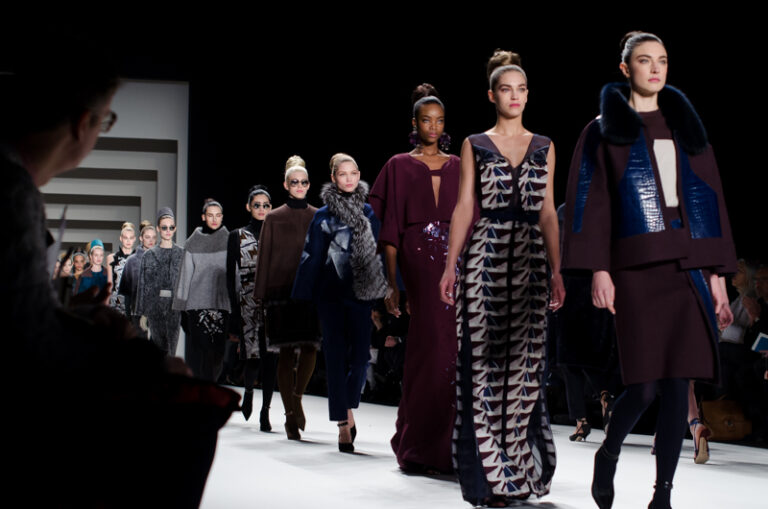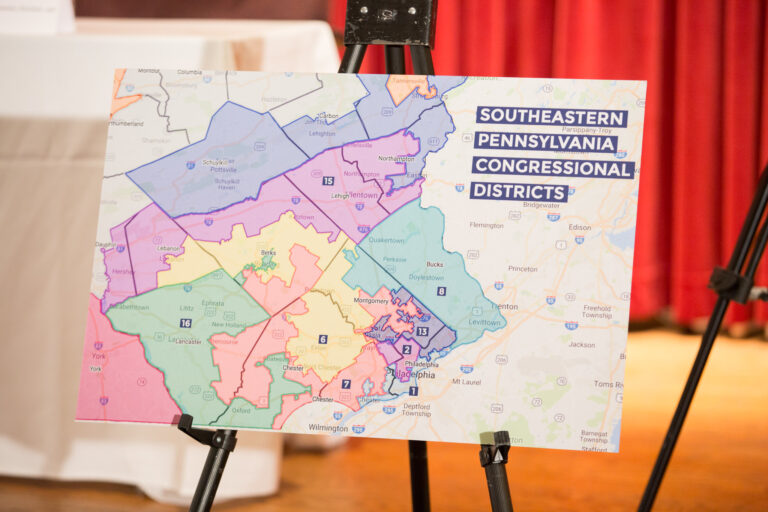A girl walks into a job interview. After engaging in some small talk with her prospective employer, she is asked to undress and perform a sexual act right then and there. Outrageously inappropriate? Yes. Illegal sexual harassment within the modeling industry? Sadly, not yet.
A friend of mine who is a former model allegedly experienced this scenario when her agent sent her to a casting with top photographer Terry Richardson. She’d be told that working with Richardson, who lensed covers for Harper’s Bazaar and Rolling Stone and advertising campaigns for the likes of Gucci and H&M, could be her big break. She booked the job, but had gone home in tears and turned it down. When she told her agent what had happened, her agent said he didn’t see the problem.
Despite the significant control that modeling agencies and clients exert over models’ working lives, they generally insist that models are independent contractors, not employees. As contractors, models do not benefit from the laws intended to curb sexual harassment on the job.
Widespread Sexual Abuse
Numerous models have accused Richardson and other powerbrokers in the fashion industry of sexual abuse. In many cases, the allegations go beyond mere harassment. In 2008, the fashion designer Anand Jon was found guilty of rape and multiple counts assault of aspiring models who ranged from 14 to 21 years old. In her memoir, Beauty, Disrupted, published in 2011 by Harper Collins, supermodel Carré Otis named the man who she claims raped her repeatedly when she was 17-years-old: Gérald Marie, her agent at the time, and the head of her modeling agency. Model-turned-mental health advocate Nikki DuBose recently described being drugged and raped by a photographer at a meeting arranged by the director of her modeling agency, who she was also pressured to sleep with; “When I did, I worked more, and when I didn’t the work stopped coming.”
One day after Vice President Biden spoke about sexual assault at the 2016 Academy Awards, model-turned-actress Jaime King revealed on social media that she endured “years of abuse as a minor in the industry.” Further, nearly 60 women, many of whom were models at the time, have accused Bill Cosby of rape, drug facilitated sexual assault and child sexual abuse. Many of these women’s stories are strikingly similar, not only for their alleged abuse by Cosby, but also for being introduced by their modeling agents.
Although New York Magazine devoted covers to the Bill Cosby story and to the controversies surrounding Terry Richardson, they failed to acknowledge models’ lack of protection against sexual harassment on the job, or to scrutinize the role that modeling agents might play in these abuses.
With the majority of fashion models beginning their careers between the ages of 13 and 16, children who model are particularly susceptible to such abuse. And, yet, it wasn’t until November 2013 that underage models in New York State—the center of fashion in the US—had any protections under the Department of Labor.
Financial Exploitation
In his deposition, Cosby admitted that he asked a modeling agent to connect him with young women who were new in town and “financially not doing well.” Although modeling is thought to be a lucrative profession, for most models it can be anything but. Many models experience wage theft from unscrupulous agencies. Even top agencies sometimes hold onto their models’ earnings and have been accused in a pending class action lawsuit of pocketing royalty payments. As independent contractors, models lack minimum wage protection, and many jobs pay in “trade,” not money. Castings and fittings are unpaid, too, and modeling agencies don’t always tell the models in advance whether or how much they can expect to be paid for a job.
At the time of my friend’s casting with Richardson, she was working in debt to her modeling agency. The agency charged a myriad of unexplained expenses to her account, from airfare and rent at the agency-owned apartment to costs associated with developing her portfolio and appearing on the agency’s website. For many models, this debt becomes leverage for poorly regulated agencies that then send models to foreign countries and to complete unwanted assignments. These models are often expected to go to nightclubs and dinners arranged by their agencies where they may be expected to schmooze with much older men. To call it a form of indentured servitude is no exaggeration.
Blindness to Sexual Harassment
When the fight against sexual harassment in the workplace began, women struggled to have their concerns taken seriously and to establish their rights. In the 1970s, most of the first sexual harassment cases were dismissed since the male judges saw sexual harassment as mere sexual proclivities.
Today, sexual harassment of young people who seek employment as models is so pervasive, it’s treated as a given. Sexual harassment even has its own euphemistic term, the “casting couch,” to describe how young hopefuls are routinely encouraged to do sexual favors in exchange for a big break.
Many people see the fashion industry as frivolous, and although models are highly visible and enjoy a lot of cultural status in our society, their labor is invisible. As a result, models’ concerns tend to be trivialized and dismissed. The labor force in the modeling industry also skews young and female. If models were mostly middle-aged men, like the fashion designers, photographers and presidents of agencies for whom they work, models would probably be treated very differently.
Whatever one thinks of fashion and modeling, models’ lack of protection against sexual harassment on the job is an injustice that extends far beyond the fashion industry. Today, those who are classified as independent contractors — an estimated 42 million American workers, according to a report by the Freelancers Union — remain unprotected.
California Bill AB 2539
The power imbalance between most models, on the one hand, and the agencies and clients, on the other, contributes to a culture that tolerates sexual harassment and financial exploitation. Some of the abuses that models face are criminal. However, protections that fall under criminal law alone are not enough. Under current employment law, those responsible for sexual harassment and financial exploitation in the modeling industry are rarely held accountable. It is unconscionable to allow such abuse of this mostly young, female workforce to persist. Regardless of how a model is classified, it is imperative to maintain a safe and fair working environment.
Recently, California Assemblymember Marc Levine introduced AB 2539, a bill that aims to extend labor, health and safety protections to fashion models working in the state. The bill clarifies that all modeling agencies should be licensed and regulated under the Talent Agency Act, which provides comprehensive and necessary worker protections. It also clarifies that models, like actors, are employees of the brands they represent, rather than independent contractors, ensuring that models are granted worker protection rights that all employees have in the U.S. AB 2539 will be heard before the Labor and Employment committee on April 6, 2016.






Daily News & Commentary
Start your day with our roundup of the latest labor developments. See all
December 18
New Jersey adopts disparate impact rules; Teamsters oppose railroad merger; court pauses more shutdown layoffs.
December 17
The TSA suspends a labor union representing 47,000 officers for a second time; the Trump administration seeks to recruit over 1,000 artificial intelligence experts to the federal workforce; and the New York Times reports on the tumultuous changes that U.S. labor relations has seen over the past year.
December 16
Second Circuit affirms dismissal of former collegiate athletes’ antitrust suit; UPS will invest $120 million in truck-unloading robots; Sharon Block argues there are reasons for optimism about labor’s future.
December 15
Advocating a private right of action for the NLRA, 11th Circuit criticizes McDonnell Douglas, Congress considers amending WARN Act.
December 12
OH vetoes bill weakening child labor protections; UT repeals public-sector bargaining ban; SCOTUS takes up case on post-arbitration award jurisdiction
December 11
House forces a vote on the “Protect America’s Workforce Act;” arguments on Trump’s executive order nullifying collective bargaining rights; and Penn State file a petition to form a union.